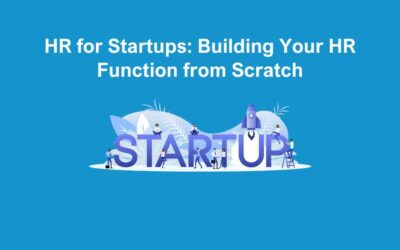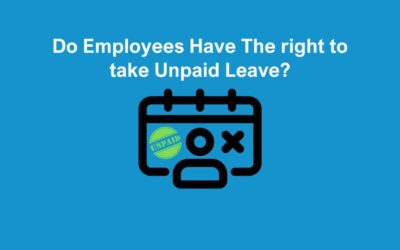We caught up with CEO & Founder of The HR Booth, Alistair, to get his thoughts on this topic of recessions and redundancies.
The UK have entered a “technical” recession, and this has naturally made business owners a little anxious.
I’ve been in HR for over 30 years and I remember the 2008 recession well and the steps we had to take then. I’ve been involved in supporting businesses during previous recessions, and our team have decades of collective experience within HR.
We are starting to see more enquiries coming in from clients and prospects on the subject of redundancy. Not huge numbers but we are seeing an increase.
With lots of huge tech, investment and housebuilding firms laying off lots of people, there’s always a domino effect and with the UK entering a technical recession, it’s understandable that business owners are twitchy.
Redundancy should be a last resort and I remember 2020 before the furlough scheme was announced but businesses were being told to close their doors to the public. We advised clients then that they should consider short-term working or lay-off first and look at other options before making any redundancies, and thankfully our clients did this and then the furlough scheme was announced. However, lots of businesses made lots of redundancies at the end of the furlough scheme and with Brexit and other factors, it wasn’t long before we had a labour shortage.
The decisions we make now could impact on people and business longer term, and any recession won’t last forever.
Recessions present formidable challenges for businesses, compelling them to make difficult decisions to stay afloat. One of the most daunting prospects is reducing labour costs, which often leads to considering layoffs. However, before taking such drastic measures, there are several strategic steps employers can adopt to mitigate financial strains while retaining their valuable workforce. This blog post outlines these steps, emphasising the importance of innovative solutions like crowdsourcing to sustain operations during economic downturns and recessions.
Here are some things to consider.
Rethinking Compensation Structures
Pay Reductions
Temporarily reducing salaries across the board can be a more palatable alternative to job cuts. Transparent communication about the financial health of the company and the necessity of pay cuts can foster understanding and cooperation among employees.
Deferred Compensation
Offering deferred compensation plans, where a portion of an employee’s earnings is paid out at a later date, can ease immediate payroll pressures while giving employees future financial prospects.
Modifying Employee Benefits
Pension Scheme Adjustments
Temporarily lowering employer contributions to pension schemes can free up cash flow. Ensuring that these changes are fair and well-communicated can help maintain employee morale.
Rationalising Benefits
Reviewing and scaling back on non-essential employee benefits, such as gym memberships or wellness programs, can result in significant savings. Prioritising essential benefits that support employee well-being is key to working your way through recessions.
Flexible Working Arrangements
Reduced Hours
Implementing shorter work weeks or part-time working arrangements can significantly lower wage expenses. This approach can preserve jobs while aligning payroll costs with reduced business activity during recessions.
Remote Work
Encouraging remote work can reduce office-related expenses, such as utilities and leasing costs. The adoption of digital tools can maintain productivity and collaboration among remote teams.
Operational Cost Reduction
Office Expenditure
Downsizing office space or renegotiating lease agreements can yield considerable savings. Additionally, cutting down on non-essential office supplies can contribute to cost efficiency.
Corporate Hospitality
Limiting expenses on corporate events, business travel, and client entertainment can substantially reduce non-essential spending. Emphasising virtual meetings and modest client engagements can maintain relationships without the hefty price tag.
Crowdsourcing for Innovative Solutions
In times of crisis, harnessing the collective intelligence of your workforce can unveil creative and effective strategies for cost-saving and efficiency improvements. Crowdsourcing involves engaging employees at all levels to contribute ideas and solutions. This inclusive approach not only generates a diverse set of ideas but also fosters a sense of unity and purpose among staff, boosting morale during challenging times.
Benefits of Crowdsourcing
Diverse Perspectives
Employees from different departments and backgrounds can offer unique insights, leading to innovative solutions that management might not have considered.
Employee Engagement
Involving employees in problem-solving processes increases their commitment and loyalty, as they feel valued and part of the company’s resilience strategy.
Cost-Effective Innovation
Crowdsourcing ideas from employees can be more cost-effective than consulting external experts, as it leverages the existing knowledge and creativity within the organisation.
Agility and Adaptability
Rapidly changing economic conditions require swift adaptation. Crowdsourced solutions can be quickly implemented, enabling the business to remain agile and responsive.
Beyond the strategies already discussed, there are additional approaches that employers can consider to mitigate the need for layoffs during economic downturns. These methods can help preserve jobs while ensuring the business remains viable:
Job Sharing
- Implementing a job-sharing scheme allows two or more employees to share the responsibilities and hours of a single full-time position. This arrangement can maintain employment for more individuals while adapting to reduced workloads.
Training and Reskilling
Investing in training and reskilling programs can equip employees with new skills relevant to other roles within the organization that may be in higher demand. This approach not only retains talent but also enhances the company’s adaptability and competitiveness.
Voluntary Leave or Sabbaticals
Offering options for unpaid leave, sabbaticals, or extended vacations can appeal to employees who might welcome a break for personal reasons, further studies, or travel. This can temporarily reduce payroll costs without resorting to permanent layoffs.
Employee Loan Programmes
Some businesses opt to “loan” employees to other organisations that need temporary staff, with the understanding that these employees will return to their original positions once business conditions improve. This strategy keeps employees gainfully employed and maintains their connection to the company.
Enhanced Performance Management
Focusing on performance management can help identify areas where productivity can be improved, potentially offsetting the need for cost reductions through layoffs. Setting clear performance metrics and supporting employees in meeting these can enhance overall efficiency.
Revenue Diversification
Exploring new revenue streams or diversifying the business model can offset declines in traditional income sources. This might involve expanding into new markets, developing new products or services, or leveraging digital platforms to reach a broader audience.
Enhanced Customer Engagement
Focusing on customer retention and engagement can help stabilise revenue during challenging times. Initiatives such as loyalty programs, personalised marketing campaigns, and exceptional customer service can strengthen customer relationships and encourage repeat business.
Cost-sharing with Suppliers and Partners
Negotiating cost-sharing arrangements or deferred payment terms with suppliers and business partners can alleviate immediate financial pressures. Collaborative approaches to managing the supply chain and operational costs can benefit all parties involved.
By considering these additional strategies, employers can create a multifaceted approach to managing economic downturns, potentially avoiding the need for layoffs and fostering a more resilient and agile organisational structure.
Confronting a recession requires a balanced approach that prioritises the well-being of both the business and its employees. Before considering layoffs, employers can explore various strategies to reduce labour costs while preserving their workforce. From adjusting compensation and benefits to embracing flexible work arrangements and operational efficiencies, there are numerous ways to navigate economic downturns. Moreover, engaging the collective wisdom of employees through crowdsourcing can uncover innovative solutions, fostering a collaborative and resilient organisational culture. By adopting these strategies, businesses can not only survive recessions but emerge stronger and more cohesive in the aftermath.







